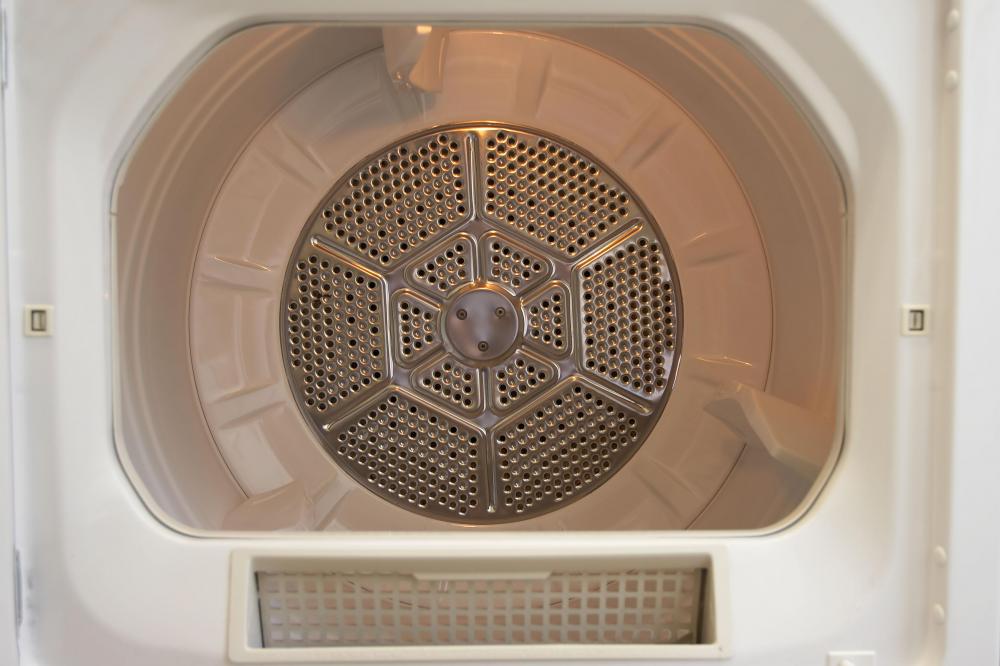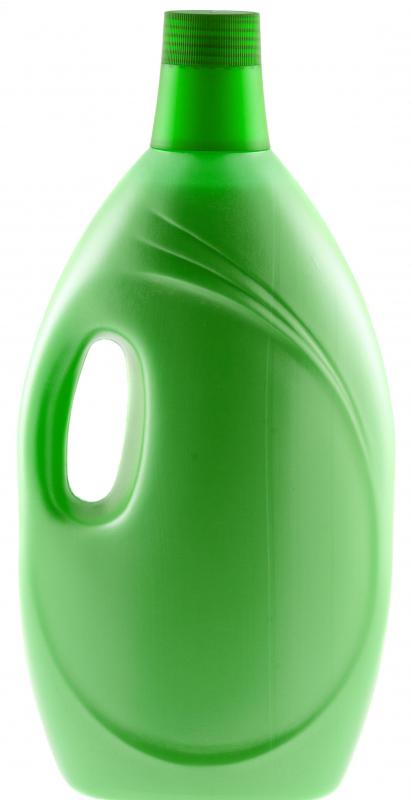At HomeQuestionsAnswered, we're committed to delivering accurate, trustworthy information. Our expert-authored content is rigorously fact-checked and sourced from credible authorities. Discover how we uphold the highest standards in providing you with reliable knowledge.
What is Fabric Softener Made of?
While many people rely on their favorite fabric softener to reduce static cling, soften their laundry and make ironing easier, they rarely stop to think about the science behind softening fabric. They were first devised in the early 1900s as a way to reduce the stiff, rough feeling of newly dyed cotton fabric. Early “cotton softeners” were developed using water, soap and oil — the oils most often used being corn, olive, and tallow.
Clothing manufacturers and consumers began to see the value in fabric softeners, and an industry was born. Products like these have evolved to meet additional consumer needs, with the addition of fresh scents, dyes and the ability to reduce wrinkles, make ironing easier, and added stain protection.

The typical product contains chemicals and additives to make the fabric soft and static free. Traditionally, the chemicals deposit themselves onto the fabric, but recent formulas use technology that allows the fabric softener to actually penetrate the fabric. This improves the absorption of the fabric, which in the past has been compromised by use of these products.

Dihydrogenated tallow dimethlyl ammonium chloride (DHTDMAC) is a fatty material that is used in most fabric softeners. It falls under a certain type of materials called quaternary ammonium compounds (“quats”), and is used to combat static cling. Static cling is caused by fibers that are negatively charged. The positive charge of materials like DHTDMAC counteracts this negative charge, negating static. The fatty element of the chemical gives the fabric the softness and “slippery” feeling that some people prefer over unsoftened laundry.

Other ingredients in these products are emulsifiers. Most brands have one, two, or a combination of several different types, which include emulsion polymers, macro-emulsifiers, and micro-emulsifiers. Macro-emulsifiers can be compared to a lotion, containing a mix of oil and water. Emulsion polymers use tiny drops of silicone, and micro-emulsifiers have such small particles of oil that they actually penetrate the weave of the fabric instead of merely being deposited on top of it. Emulsifiers can be either cationic (positively charged) or non-ionic (not charged). A combination of both of these is often included.

Many newer formulas of fabric softener use polydimethylsiloxanes (PDMS), which are silicone derivatives. They lend softness, and make ironing easier by “lubricating” the fabric. Since most ingredients in these products aren’t water soluble due to the emulsifiers, many brands have to be added to the final rinse cycle of the wash to be most effective.
AS FEATURED ON:
AS FEATURED ON:

















Discussion Comments
Is there any ingredient that can add in fabric softener to make the fragrance more lasting, even after washing or putting in the dryer (80 degrees C)?
The same ingredients that make your towels soft can ruin moisture-wicking clothing. These garments rely on the breathability of the fabric to do their job, and when residue is deposited on them, they lose their power.
I ruined my husband's workout gear by using fabric softener on it once. He complained so much that I will never forget and make the same mistake.
Sometimes, when I'm doing laundry, fabric softener slips my mind. If I forget to use it, I will just rub it on the items that need it most when I put them on.
Its ability to fight static cling is so awesome that it doesn't even have to be tossed into the dryer to be effective. If I pull a garment over my head and feel static against my skin, I just take a fabric softener sheet and rub it all over the underside of the garment until the static is gone. I even rub it on my hair if it is standing up from pulling the clothing over my head.
@seag47 – My mother makes her own liquid fabric softener with baking soda and vinegar. She puts a quarter cup of baking soda in the washer before it starts, and she waits until the rinse cycle starts to put in half a cup of vinegar. So, it's all taken care of in the washer instead of the dryer.
I don't like the smell of vinegar, so I use another homemade fabric softener. I mix water with hair conditioner, and it works very well. Plus, it smells good.
It's kind of gross that several fabric softener ingredients were derived from animal fat. I really don't like to think about my clothes being tossed around with animal lard in order to feel softer.
Are there any natural softeners that we can use instead? I just want to avoid using things that came from the bodies of dead animals if at all possible.
How does the fabric softener sheets prevent formation of the static cling in dryers?
Post your comments